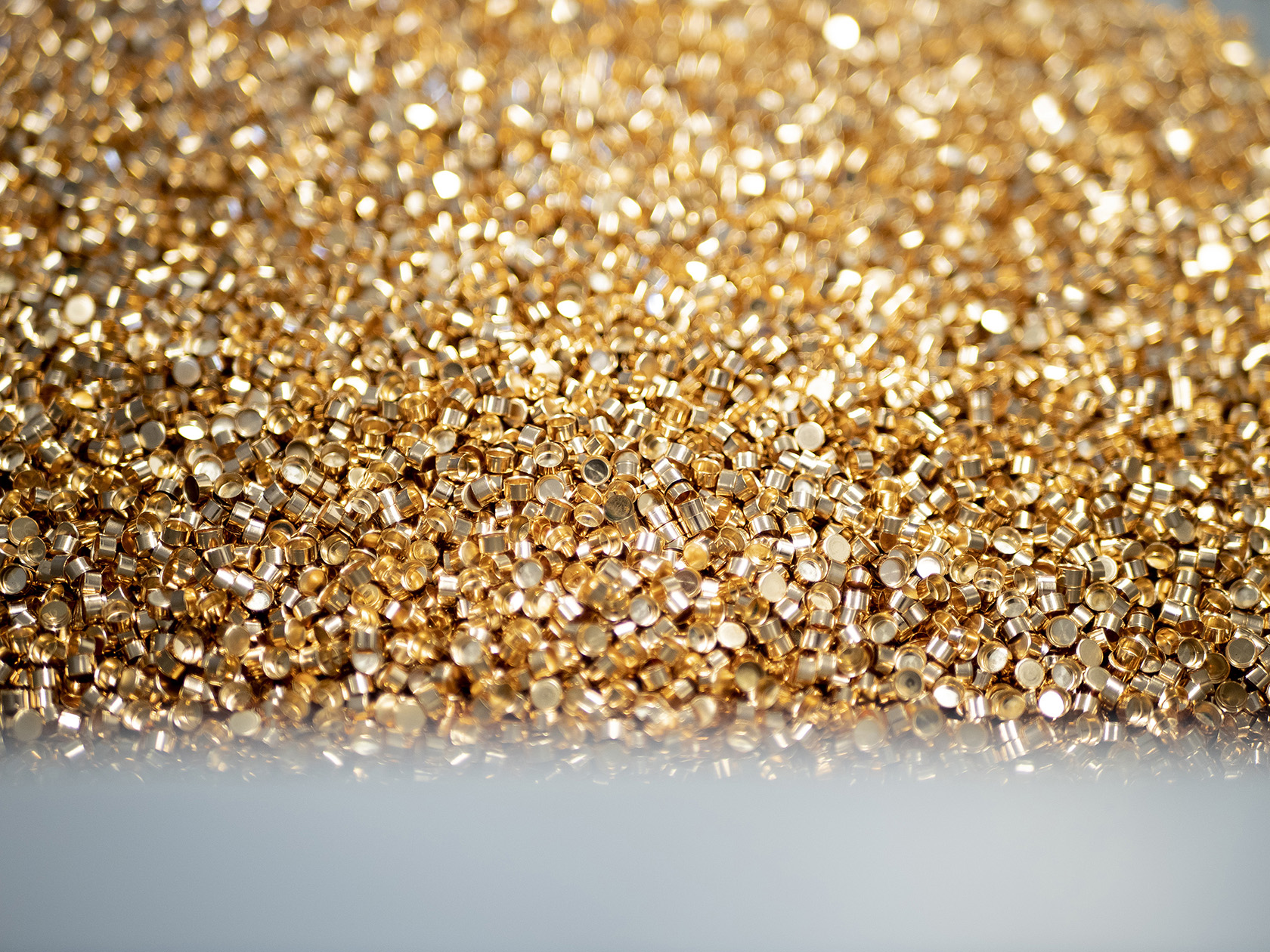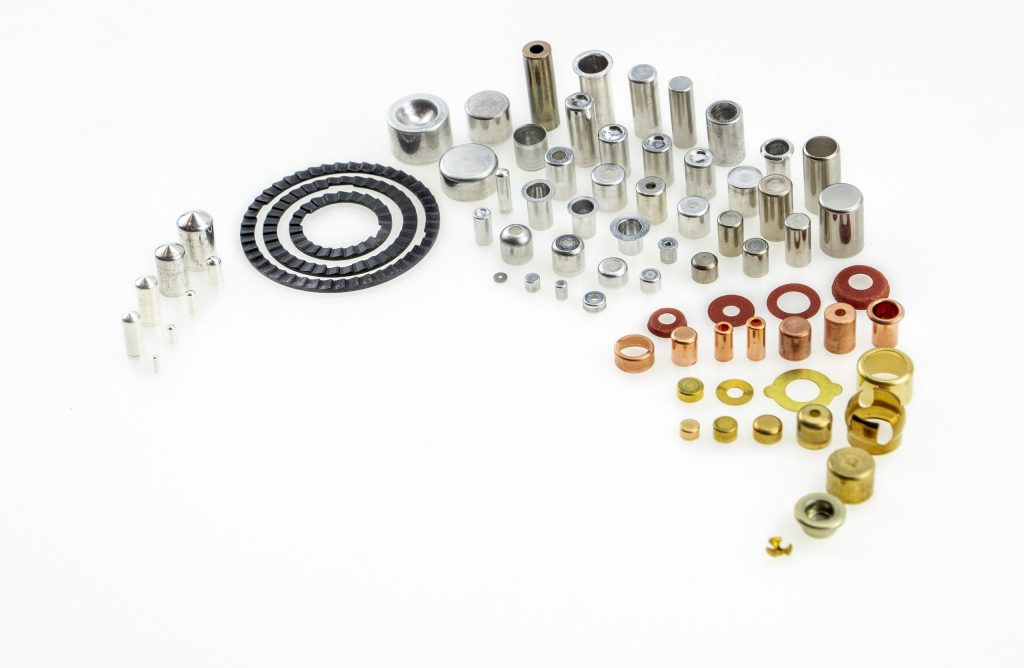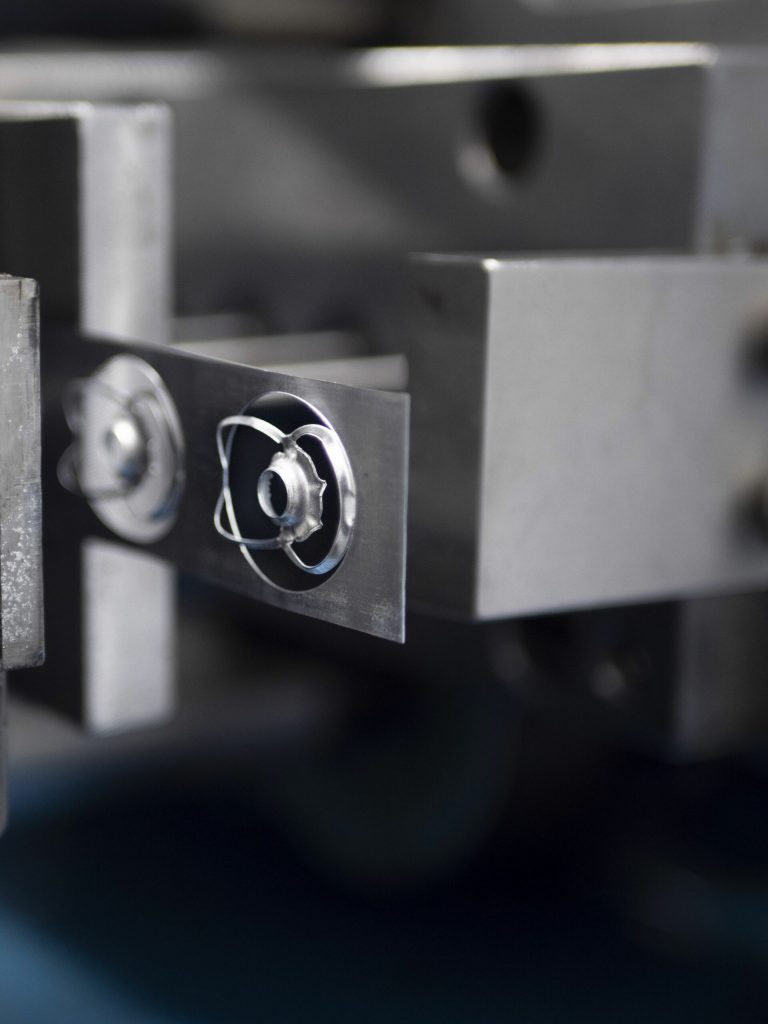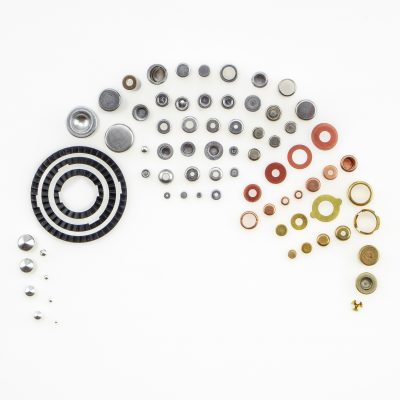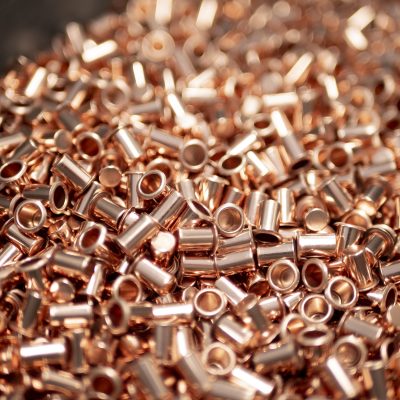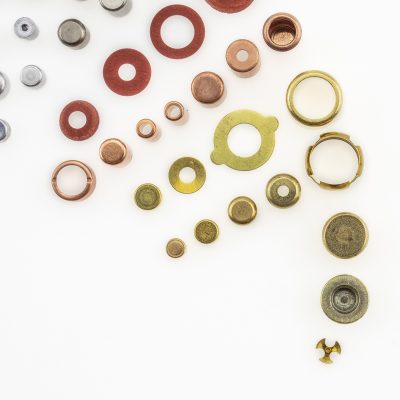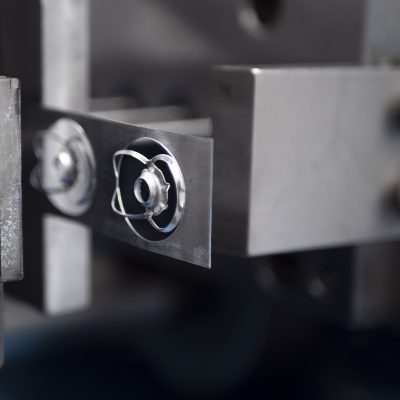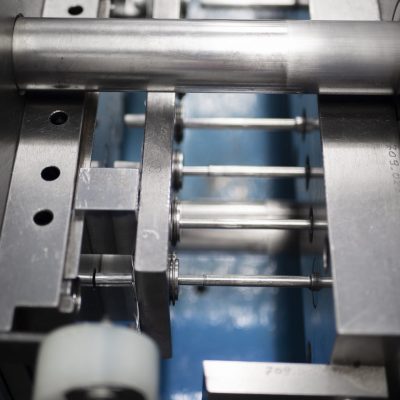At New Microfil, we produce parts by deep drawing in progressive die tooling out of a continuous coil of metal strip.
Deep drawing is a metal sheet forming process where material is pushed into a die by a punch to form a curved body.
The starting point is generally the cut of a disk or a blank of material. It stays partially fixed to the strip that is fed by a feeder throughout the tooling. For each stroke of the press, the strip moves of a given distance corresponding to the distance between stations. At each station, the material is worked given at the end a finished part which is cut off the strip.


